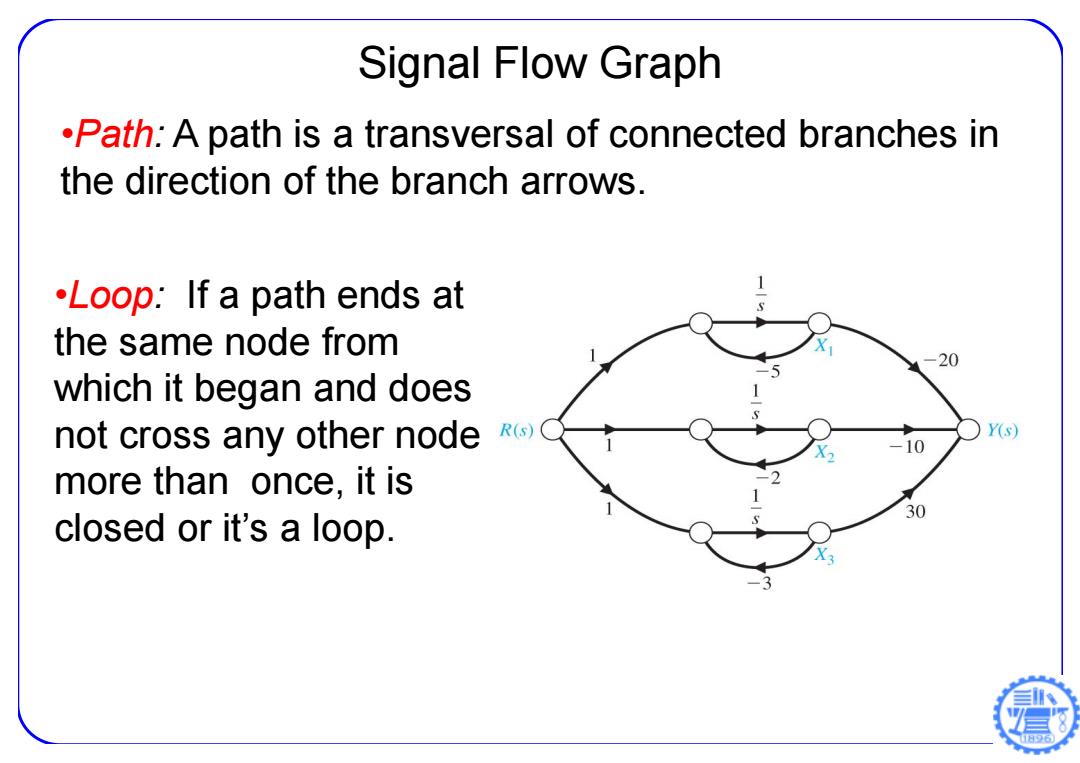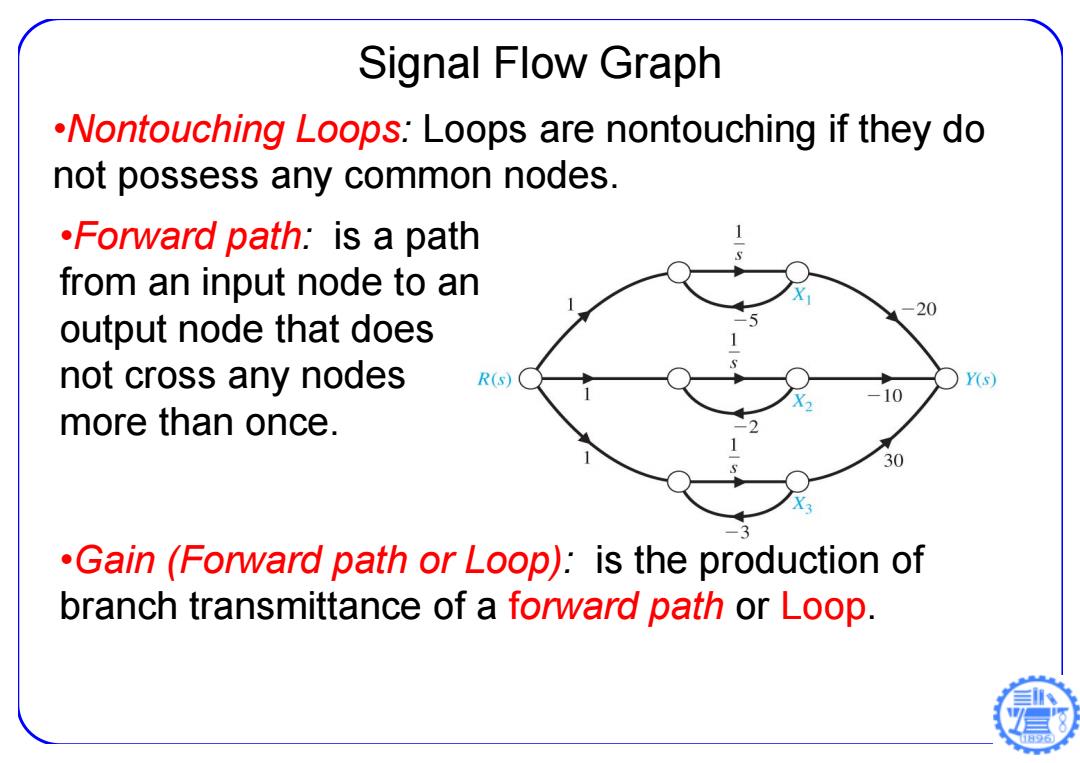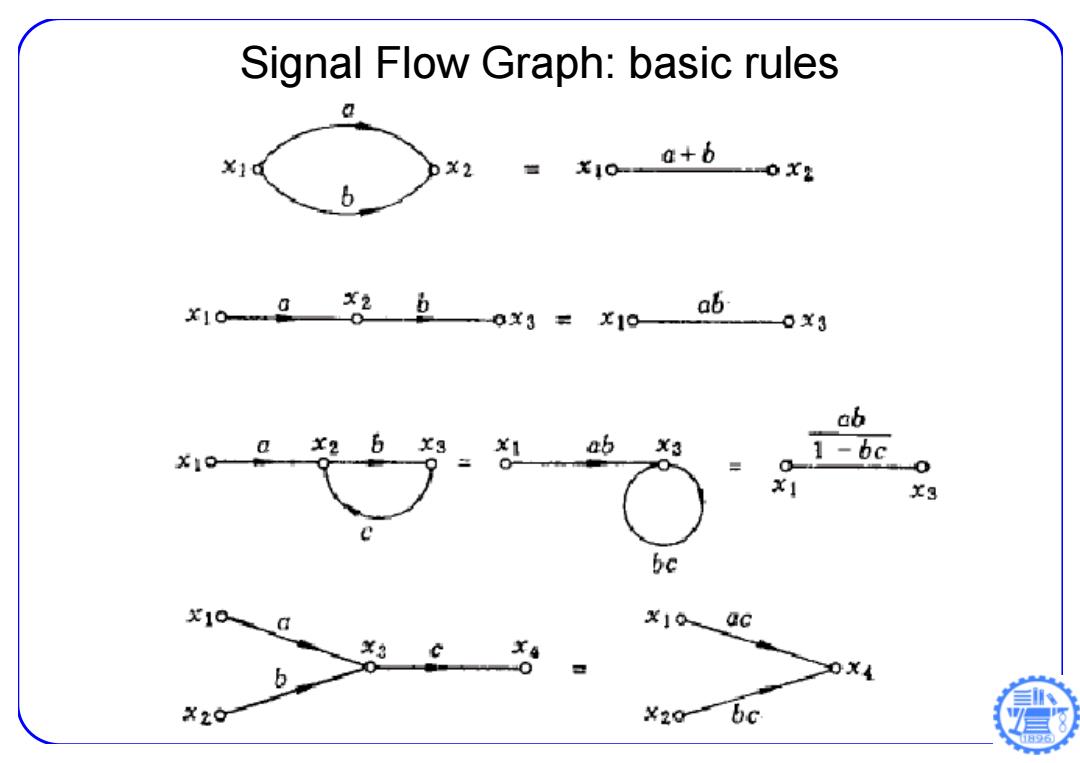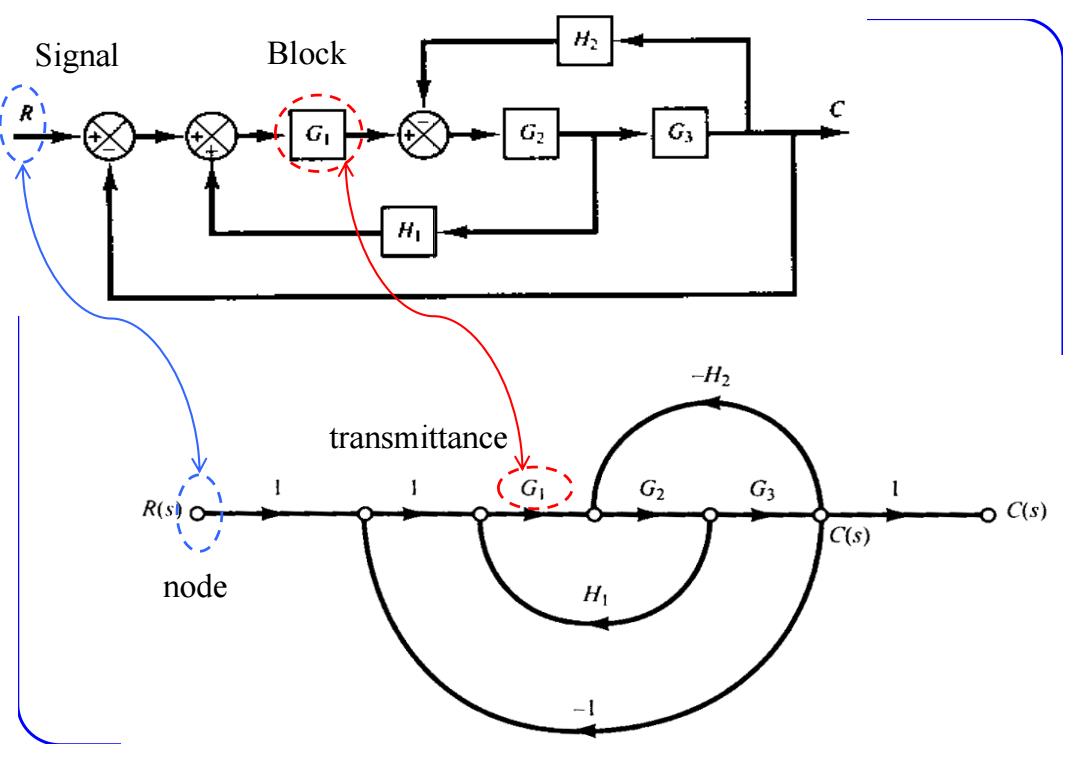
Signal Flow Graph .Path:A path is a transversal of connected branches in the direction of the branch arrows. Loop:If a path ends at the same node from 20 which it began and does not cross any other node R(s) Y(s) 10 more than once,it is 30 closed or it's a loop
Signal Flow Graph •Path : A path is a transversal of connected branches in the direction of the branch arrows. •Loop: If a path ends at the same node from which it began and does not cross any other node more than once, it is closed or it’s a loop

Signal Flow Graph .Nontouching Loops:Loops are nontouching if they do not possess any common nodes. .Forward path:is a path from an input node to an 20 output node that does not cross any nodes R(s) Y(s) more than once. 30 .Gain (Forward path or Loop):is the production of branch transmittance of a forward path or Loop
Signal Flow Graph •Nontouching Loops: Loops are nontouching if they do not possess any common nodes. •Forward path: is a path from an input node to an output node that does not cross any nodes more than once. •Gain (Forward path or Loop): is the production of branch transmittance of a forward path or Loop

Signal Flow Graph:basic rules Q X2=10 a+6 XE x10-26 0x3=x10 ab 0Y月 ab ab x3 1-bc 0 1 X3 be ¥10 b 0X4 X20 ¥2gbc 日6
Signal Flow Graph: basic rules

Signal flow graph VS Block diagram Ex3-13.Obtain the closed-loop transfer function C(s)/R(s) He G2 G H GG2Gs 1-GG2 H1+G2G3 H2 +GG2Gs Convert to the Signal flow graph
Signal flow graph VS Block diagram Ex3-13. Obtain the closed-loop transfer function C(s)/R(s) Convert to the Signal flow graph ?

Signal Block H G H -H2 transmittance G2 G R(s) C(s) C(s) node H -1
node Signal transmittance Block